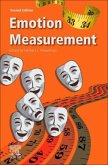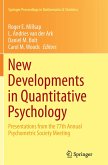The publication in 1957 of S.S. Stevens' famous paper, On the psychophysical law, ignited a controversy which has continued ever since relating to people's subjective judgements of physical reality. Why is it that the perception of sensation can diverge so sharply from the magnitude of the stimulus? How should sensation be measured? Donald Laming brings together a diversity of ideas and a wealth of experimental evidence, and provides a challenging new perspective on the question which has fragmented the research community for nearly 40 years.
S. S. Stevens' famous paper On the Psychophysical Law, published in 1957, ignited a controversy that continues to this day--how to accurately measure sensation. For example, how can the perception of sensation diverge so sharply from the magnitude of the stimulus? How should it be measured? This book offers a concise but detailed introduction to the issues arising from this controversy. It presents the most important arguments in the field, plus a comprehensive survey of the data to allow readers to form their own opinions on the debate.
Hinweis: Dieser Artikel kann nur an eine deutsche Lieferadresse ausgeliefert werden.
S. S. Stevens' famous paper On the Psychophysical Law, published in 1957, ignited a controversy that continues to this day--how to accurately measure sensation. For example, how can the perception of sensation diverge so sharply from the magnitude of the stimulus? How should it be measured? This book offers a concise but detailed introduction to the issues arising from this controversy. It presents the most important arguments in the field, plus a comprehensive survey of the data to allow readers to form their own opinions on the debate.
Hinweis: Dieser Artikel kann nur an eine deutsche Lieferadresse ausgeliefert werden.









